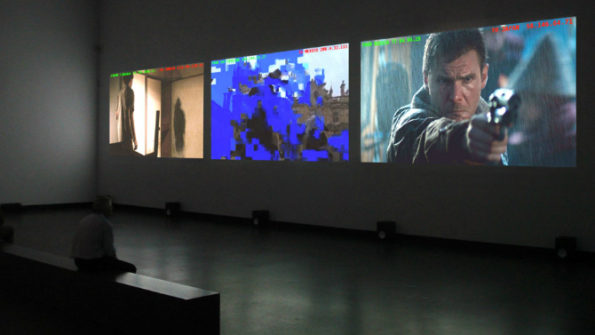Search
To search for an exact match, type the word or phrase you want in quotation marks.
A*DESK has been offering since 2002 contents about criticism and contemporary art. A*DESK has become consolidated thanks to all those who have believed in the project, all those who have followed us, debating, participating and collaborating. Many people have collaborated with A*DESK, and continue to do so. Their efforts, knowledge and belief in the project are what make it grow internationally. At A*DESK we have also generated work for over one hundred professionals in culture, from small collaborations with reviews and classes, to more prolonged and intense collaborations.
At A*DESK we believe in the need for free and universal access to culture and knowledge. We want to carry on being independent, remaining open to more ideas and opinions. If you believe in A*DESK, we need your backing to be able to continue. You can now participate in the project by supporting it. You can choose how much you want to contribute to the project.
You can decide how much you want to bring to the project.

Daily life depends on connections. All types of permanent or ephemeral links that provide the elements needed to develop a specific part of our existence. Be they physical, mental or virtual, connections are the base of our hyper-connected society. Download managers, for example, are witnesses to this facet of daily life, revealing the complex map created with the aim of sharing content. The data that they store comes from the vast global architecture that P2P networks have created. In essence, it’s a list that shows the data of the origin and destination of each connection, but it also talks about a form of human organisation that is situated at the crossroads between many territories, such as the social, the legal, the political and the aesthetic. Much has been written about P2P networks, about their potential and their demons, depending on the side that the author in question is on. But the systematic transformation of data in leisure and capital can be analysed as a social phenomenon as much as an artistic object.
Making visible the architecture of P2P networks reveals the relational dynamics of people within a distributed network. An incredibly graphic example, that reveals this geography, is the installation The Pirate Cinema, created by the digital artist Nicolas Maigret. The project is described as a monitoring room where the activity and hidden geography of P2P networks becomes visible, through the presentation of content shared in real time across networks using the BitTorrent protocol. Contextualized within the monitoring of telecommunications in society today, something that we already take for granted, Pirate Cinema explores aesthetically the potential of this architecture of pairings.
Maigret’s aim is to explore the audio-visual content according to the logic of the cable that is unique for each connection and location. P2P protocol is based on the fragmentation of archives into units of exchange, of a reduced size and weight, to be distributed to different receivers. Seen from an artistic perspective, specifically from a cinematographic perspective, this opens up various possible reflections about the conception of digital film as a trend on a global scale. The fragmentation of the archive doesn’t just affect its integrity but also directly influences its content and consequently the narrative itself. By augmenting this fragmentation, randomly cutting the segments sent in each connection, Pirate Cinema becomes a streaming broadcast that creates an aesthetic experience close to mashup cinema. The result is a flickering presentation of images of mainstream film mixed with other sorts of contents and archives, including all sorts of explicit material.
What is interesting about the installation is its capacity to show the hidden activity of these connections, each one unique but capable of creating infinite possibilities. The remote users are not aware of creating a dynamic collage determined by their selections. Maigret converts the spectator of this particular retransmission into a surveillance officer capable of seeing everything that normally can only be accessed by governments.
By contemplating the projection for a long time and watching only an insignificant fraction of the information and content that moves through the global networks, we can see clearly the functioning of something that is hounded as much as it is exalted by the models of distribution that make it possible. But if one’s honest, its attraction lies in the voyeuristic nature of society. It’s about an indiscrete gaze on part of the cycle of existence of the archives that half the world keeps on their desktop, almost like listening to a telephone conversation by chance. In the end, all that’s left is one question: what does this say about us?

Verónica Escobar Monsalve is a restless soul, with a digital nature and an analogue heart. Her investigations centre on art and culture that mix the digital world with pre-digital thought. Art and culture that is capable of reflecting the complexity of today’s world. She believes in the vital importance of a critical spirit and how this can be applied to any facet in life, however difficult it may be.
"A desk is a dangerous place from which to watch the world" (John Le Carré)